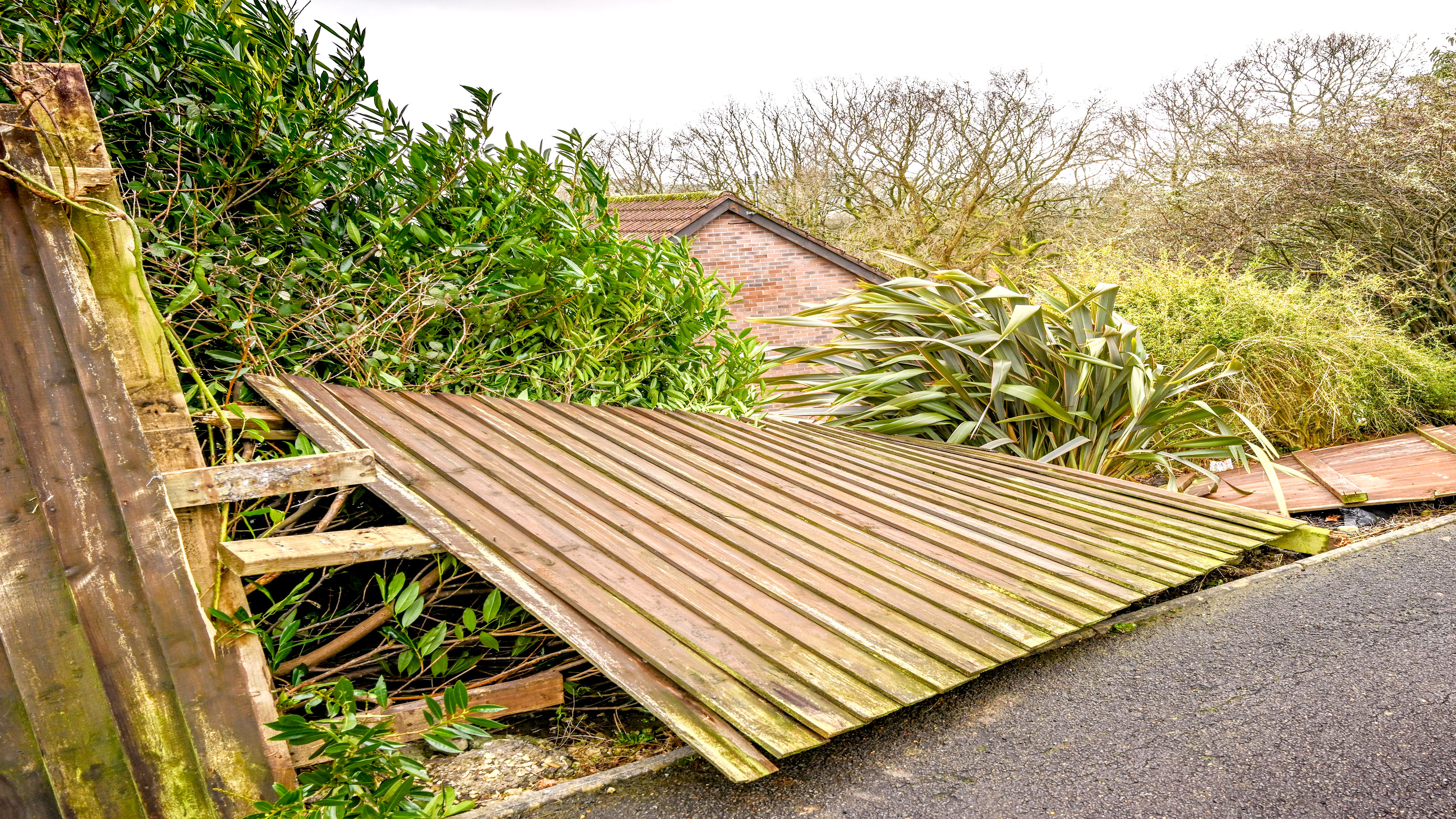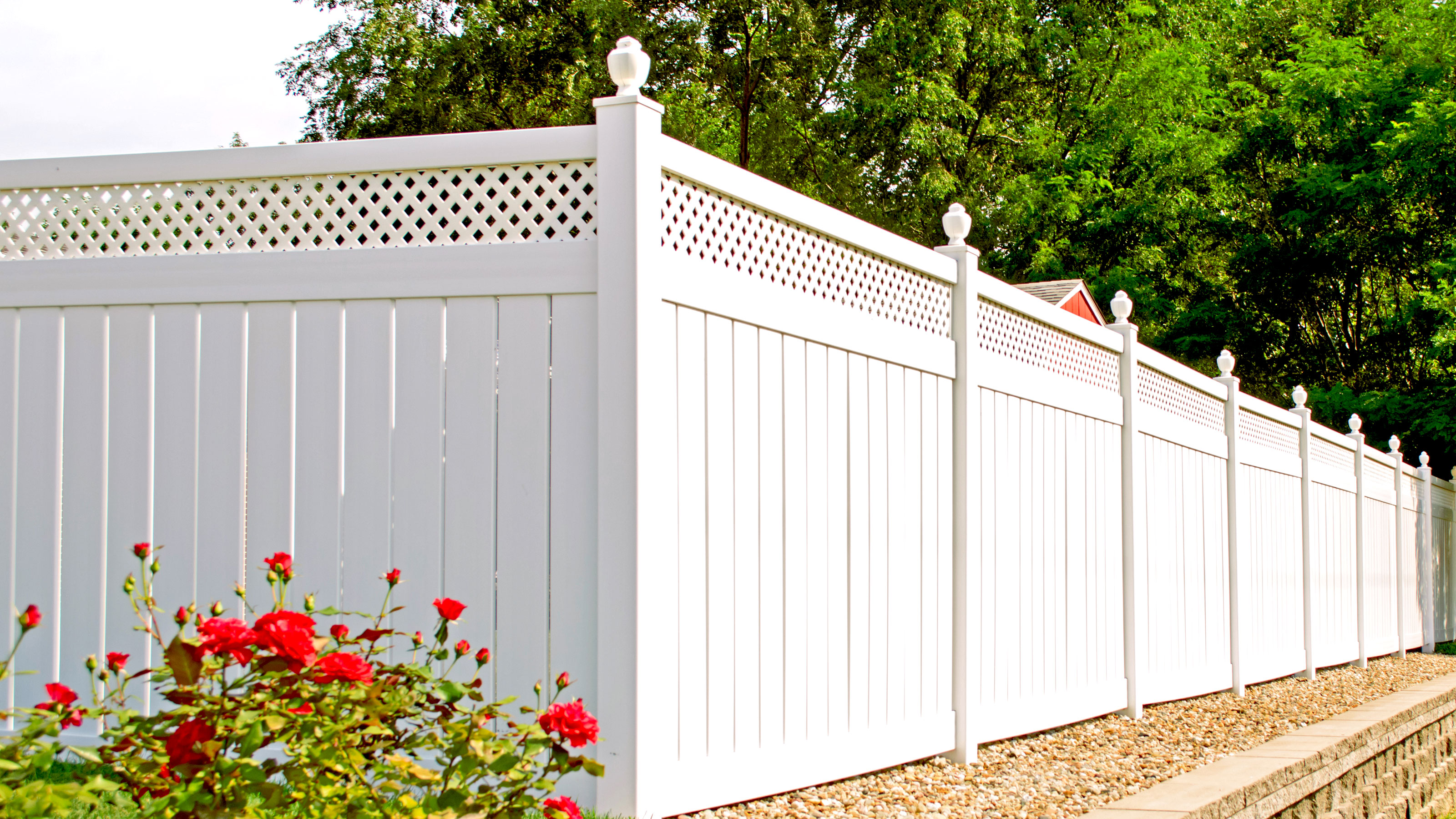Fence repair costs: What you should expect to pay to fix or replace a boundary
Damaged fence? Fence repair costs are not as much as you might expect to restore your garden surround. And you can do it yourself

Stormy weather and rotten posts will soon get you thinking about fence repair costs. How much does a new fence panel cost? Do I need new fence posts? Can I do the job myself? What tools and materials will I need?
Repairing a fence is generally a lot less than the cost to install a fence, so you need to establish what needs repairing and put together a list to help determine costs. Is it more effective to repair or replace? Here we reveal how much you can expect to pay and whether you or a neighbour are responsible for fixing a fence.
Fence repair costs. What affects the price?
Fixing a fence can be relatively quick, easy and light on your pocket as Leigh Barnes, at Jacksons Fencing reveals, “The cost will depend on what is broken, the material it’s made of, how it has been installed, and the reason it is broken. For example – is it just a couple of pales (of a picket or Featherboard fence) that have come off? These will be easy to replace yourself and you will just need nails and the pales. Similarly, if it is just one panel that has broken/blown away, the cost will be one panel that you will usually be able to replace yourself. And if your posts are slotted, it will slot right in.”
But it’s not always a simple job with different factors coming into play. Here we look at what can determine repair and replacement costs.
What fence type do you have?
Fence type can have a big impact on the cost of repair and/or replacement. Wooden fence panels are typically cheaper to fix than composite or metal fences, but it will depend on what type of wooden fence you have. For example, a basic 1.8m (6ft) wooden fence panel can be replaced for around £30-40. But if you have contemporary slatted panels like these 6 x 6 Pressure Treated Horizontal Open Slatted Screen Panel from B&Q you can expect to pay anywhere from £100-£200 per panel to replace.
Like wooden fence panels, composite fence panels vary in price depending on quality, but you should expect to pay around £120 for a standard panel while a premium composite panel can be around twice the price.
If repairing you will need to think about the cost of the material you need to repair the fence. Wood is again typically the least expensive, but again what wood you need to replace has an impact on the price. Research local suppliers to check prices for panels and materials.

How damaged is the fence?
If your fence only needs a small section repaired then the cost to repair will obviously be cheaper than a large section. But before you start any repairs you want to add up the costs – materials, labour, tools – and see if it is worth repairing the damaged sections of fencing. If the costs to fix are similar to getting brand new replacement parts then it makes sense to replace the fence.
If replacing fence panels and posts it's the perfect time to reconsider what you are going to use. Check out our garden fence ideas to help plan your new project.
Panel or post?
Is it a fence panel or fence post that needs repairing? Barnes suggests, “Check the foundations of the fence posts are solid. If they are not there will probably be many issues with the fence, and it may require a replacement. In addition, if the timber is rotten, it will also need replacing. It is usually only a matter of time for the whole fence to break from rot, so it’s simpler to replace the whole thing.”
Wooden posts are prone to rotting at ground level, and once the post becomes unstable it can affect the fence panels, so need to be replaced quickly. They are relatively inexpensive to replace, but typically take longer to fix in place than panels. A standard rectangular wooden 2.4m post (for 1.8m fence panels) like this Blooma Square Wooden Fence post from B&Q cost around £20-£40. For a quick fix you can combine with a fence spike like this Blooma Steel Post spike – also from B&Q – which cost around £10. These are hammered into the ground and you simply add the post.
Alternatively, concreting fence posts is a sturdy solution. Dig a hole for the post and and use specialist cement like Blue Circle Postcrete which you can get from B&Q. This sets within 5-10 minutes and you only need to add water. Concrete posts cost around the same as wooden posts but last a lot longer.
DIY it or call in a pro?
Are you a competent DIYer? Then repairing a fence yourself obviously saves on labour costs and the hassle of getting materials, but the savings can be offset by any tools you may need to buy. If you want to call in a professional, expect to pay around £30 an hour for labour.
FAQs
Whose responsibility is a broken fence?
If you have a fence around the boundary of your home, you are going to be responsible for at least one side. But which side? You don't want to pay out for a damaged fence that is the responsibility of your neighbour.
It's often assumed that homeowners are responsible for the left side, but fence rules are not always that straightforward. To make sure Leigh Barnes at Jacksons Fencing recommends that you look at your deeds, “Check your property deeds for the T mark which indicates who the fence belongs to.” It is as simple as that, or is it? Barnes continues, “If it is a shared boundary, you should be able to split the cost with your neighbour. Always discuss the fence with the neighbour sooner rather than later to keep relationships positive.”
Can you force a neighbour to fix a fence?
The simple answer is no unless the fence is a safety issue. If the fence only has minor damage and they don't want to fix it or can’t afford to fix there is nothing you can do. If there is more serious damage a polite conversation should be your first step. If they still refuse you can report them to your local council. An alternative is to erect a fence in front of the fence but on your land. This will be your responsibility to fix.
Get the Homebuilding & Renovating Newsletter
Bring your dream home to life with expert advice, how to guides and design inspiration. Sign up for our newsletter and get two free tickets to a Homebuilding & Renovating Show near you.
Steve Jenkins is a freelance content creator with over two decades of experience working in digital and print and was previously the DIY content editor for Homebuilding & Renovating.
He is a keen DIYer with over 20 years of experience in transforming and renovating the many homes he has lived in. He specialises in painting and decorating, but has a wide range of skills gleaned from working in the building trade for around 10 years and spending time at night school learning how to plaster and plumb.
He has fitted kitchens, tiled bathrooms and kitchens, laid many floors, built partition walls, plastered walls, plumbed in bathrooms, worked on loft conversions and much more. And when he's not sure how to tackle a DIY project he has a wide network of friends – including plumbers, gas engineers, tilers, carpenters, painters and decorators, electricians and builders – in the trade to call upon.

